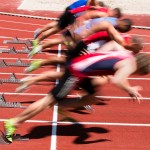
Since the 1968 Olympic games there have been consistent reports of poor oral health in elite athletes. At the London games in 2012 there were 3,220 encounters at the polyclinic; 2,105 were medical and 30% of these were dental.
The aim of this consensus statement is to raise awareness of the issues of oral health in elite sport and recommend strategies for prevention and health promotion in addition to future research strategies.
Methods
A systematic review was conducted to understand what was known about the oral health of athletes and what effect oral health had on training and performance. Searches were conducted in the Medline, Embase, EBSCO, SPORTDiscus and OpenGrey databases. Duplicate screening, eligibility assessment, data abstraction and methodological quality were conducted of observational studies.
Results
- 39 studies were eligible
- The majority of the research took place in Europe (38%)
- The methodological quality was generally low
- In particular, sampling may not have been representative
- Oral health was considered poor relative to the age of the sample
- The proportion of athletes affected by a range of conditions are shown in the table below:
|
Proportion of athletes affected |
|
| Caries |
15-75% |
| Moderate to severe periodontal disease |
15% |
| Dental erosion |
36-85% |
| Pericoronitis/impacted third molars |
5-39% |
| Dental Trauma in at risk sports |
14-57% |
- 4 studies reported data relevant to the impact of oral health on performance
- 33–66% reported a negative impact of oral health on performance
- 28–40% reported being bothered by their oral health or with an impact on their quality of life
- 5–18% reported an effect on performance
Conclusions
The authors reported the conclusions of the review as:
- Poor oral health is common in elite or professional athletes;
- The oral health of elite athletes is similar to non-athlete disadvantaged populations.
Commentary
The full systematic review (Ashley et al – in press) that underlies this consensus statement was not available at the time of writing so key points are taken in this document.
As all the included studies are observational and have low quality (as the authors note) they are likely to have suffered from unrepresentative sampling. This is likely to have been biased to those who attended the dental facilities and so potentially have greater levels of dental disease. That said, it is important to note that elite athletes are not immune from oral health problems unless appropriate oral health behaviours and preventive behaviours are adopted.
The recommendations for oral health promotion included in the statement are sensible and essentially similar to those from any other walk of life. It is perhaps a timely reminder that good oral health is as important to elite athletes as it is to ordinary people, as we need to tailor advice and support accordingly.
Links
Needleman I, Ashley P, Fine P, Haddad F, Loosemore M, de Medici A, Donos N, Newton T, van Someren K, Moazzez R, Jaques R, Hunter G, Khan K, Shimmin M, Brewer J, Meehan L, Mills S, Porter S. Oral health and elite sport performance. Br J Sports Med. 2014 Sep 28. pii: bjsports-2014-093804. doi: 10.1136/bjsports-2014-093804. [Epub ahead of print] PubMed PMID: 25263651.
Ashley P, Cole E, Di lorio A, et al. Oral health of athletes and association with performance: a systematic review. Br J Sports Med 2014; In press.
Developing better oral health: an evidence-based toolkit for prevention

“@TheDentalElf: Oral health problems in elite athletes http://t.co/1IKVwAmvEZ” healthy body does not necessarily mean healthy teeth
http://t.co/wxsRdfudlX
“@TheDentalElf: Oral health problems in elite athletes http://t.co/YP7abDy8yD” @charlhurst is this of any help for you FYP?
Don’t miss: Oral health problems in elite athletes http://t.co/fI3oidBHxF
[…] Dental Elf 14th Oct -2014 Oral health problems in elite athletes […]